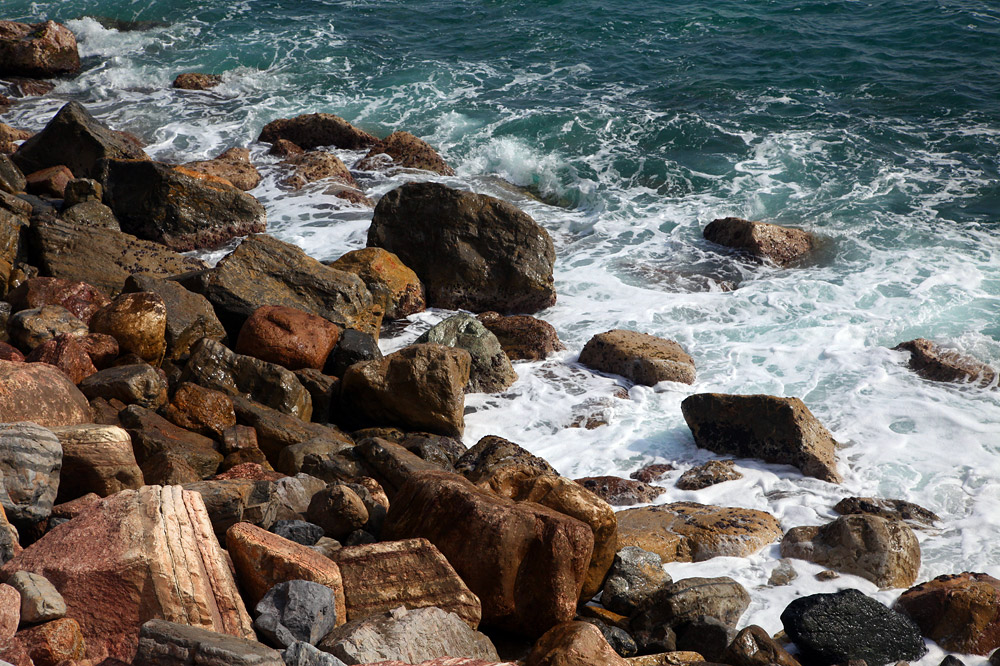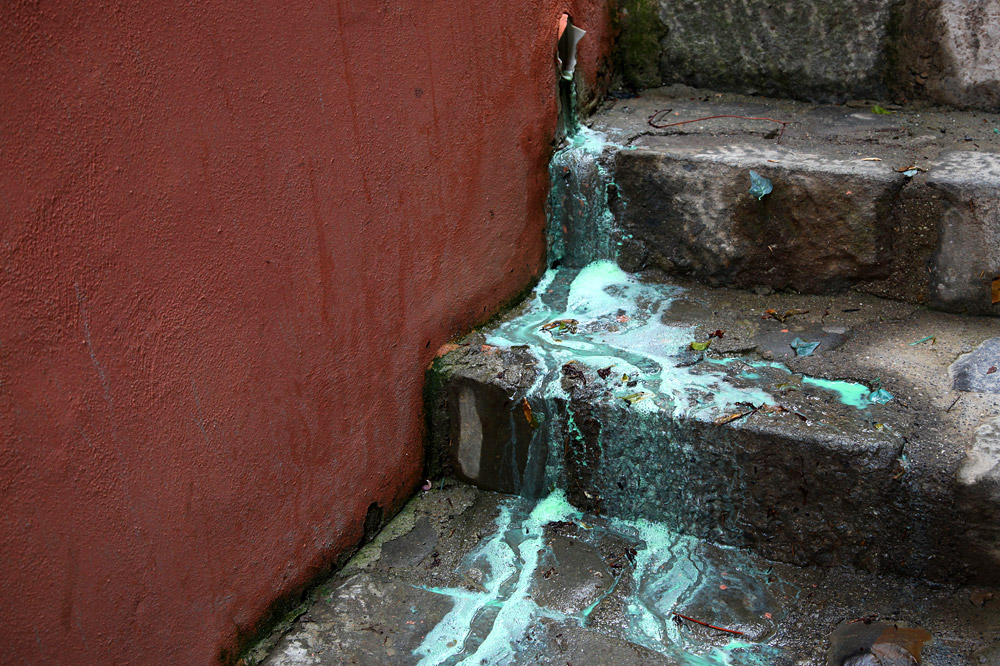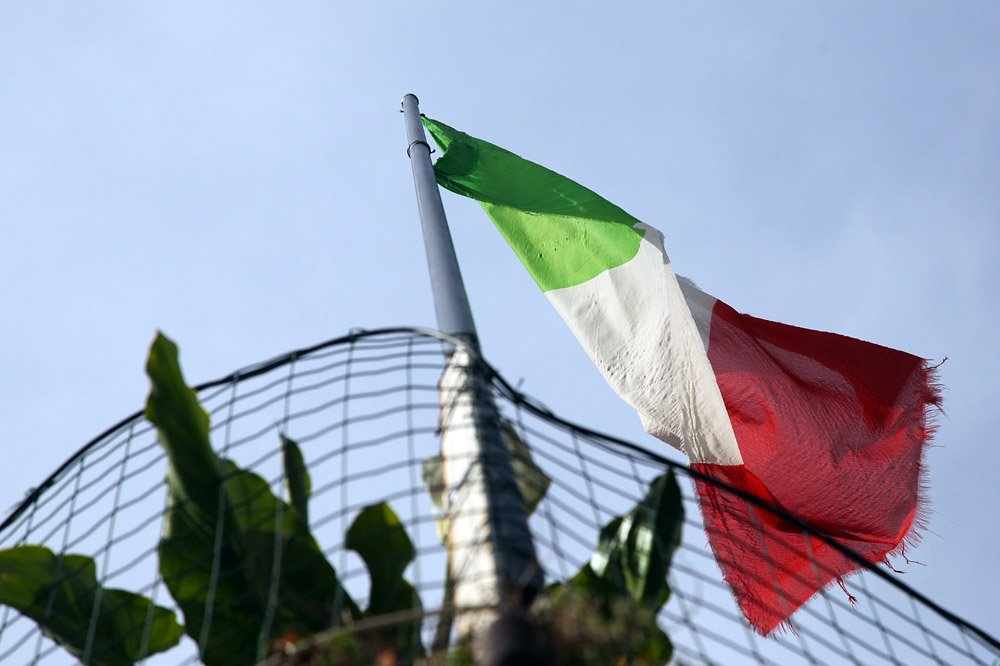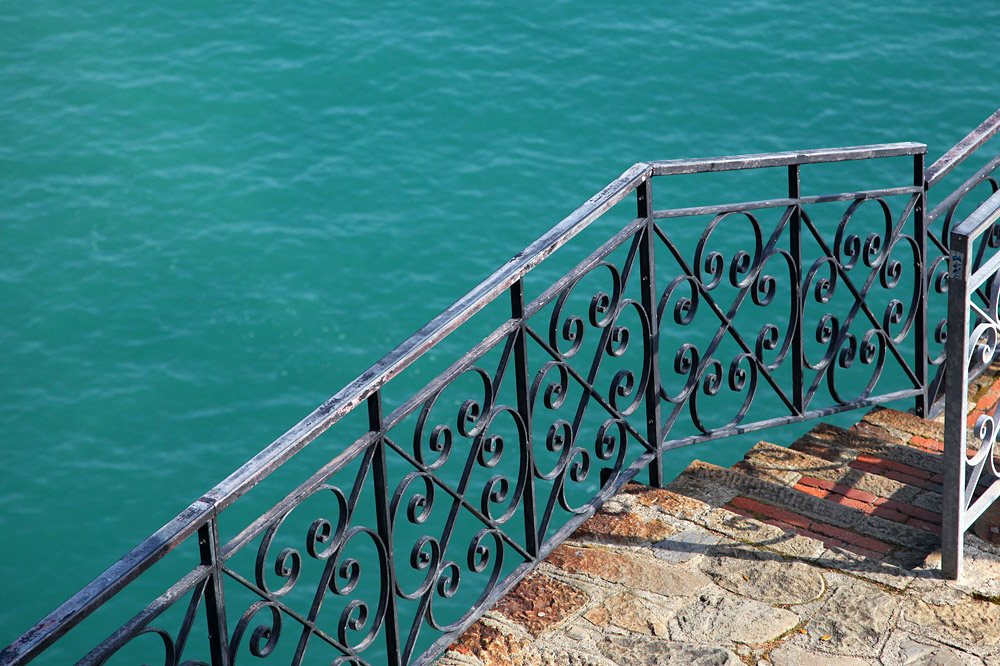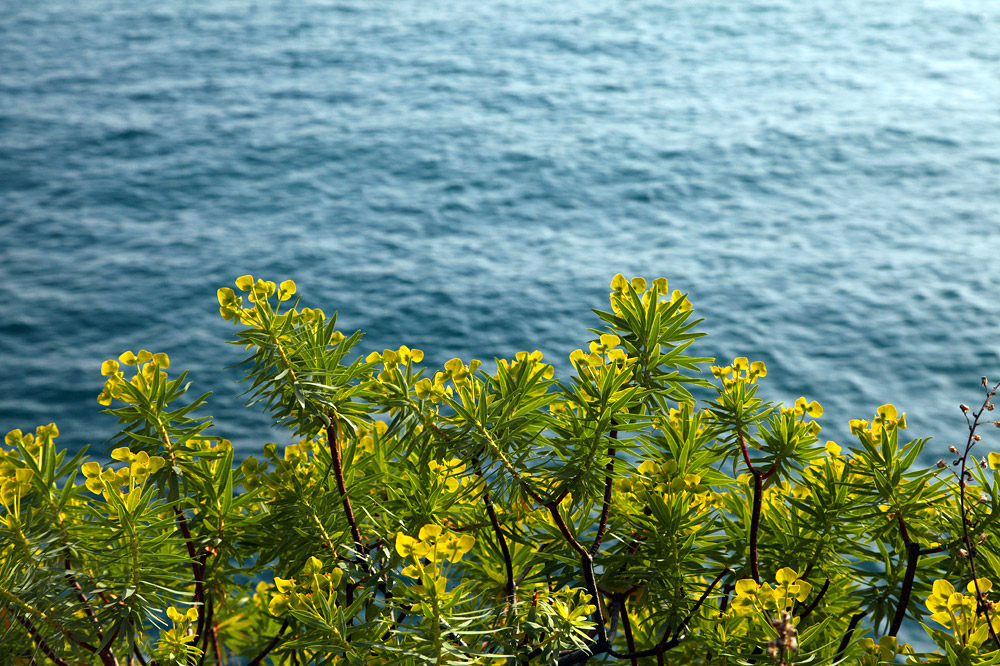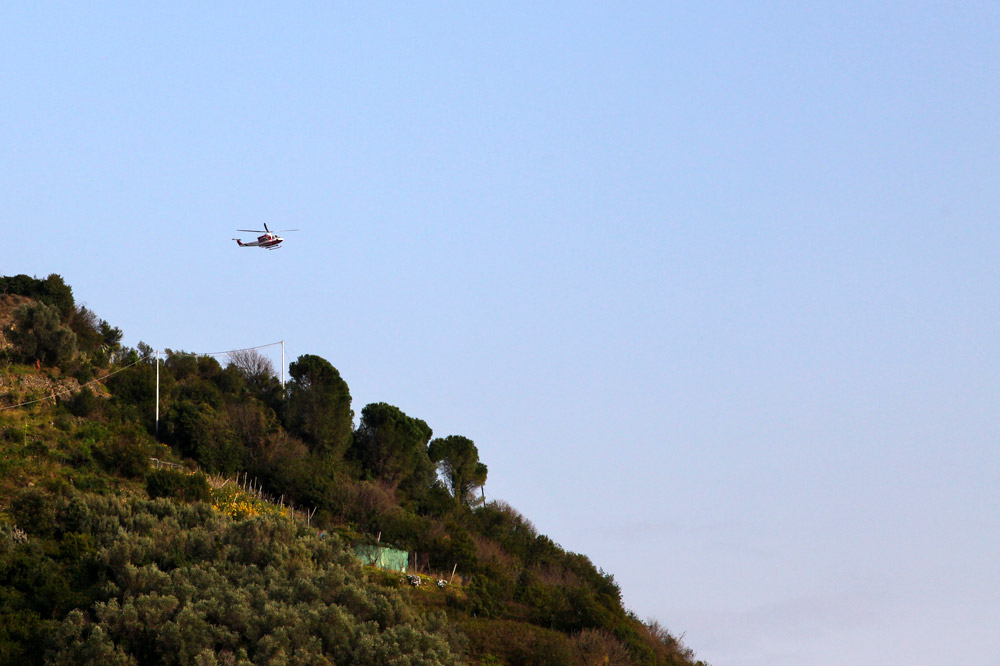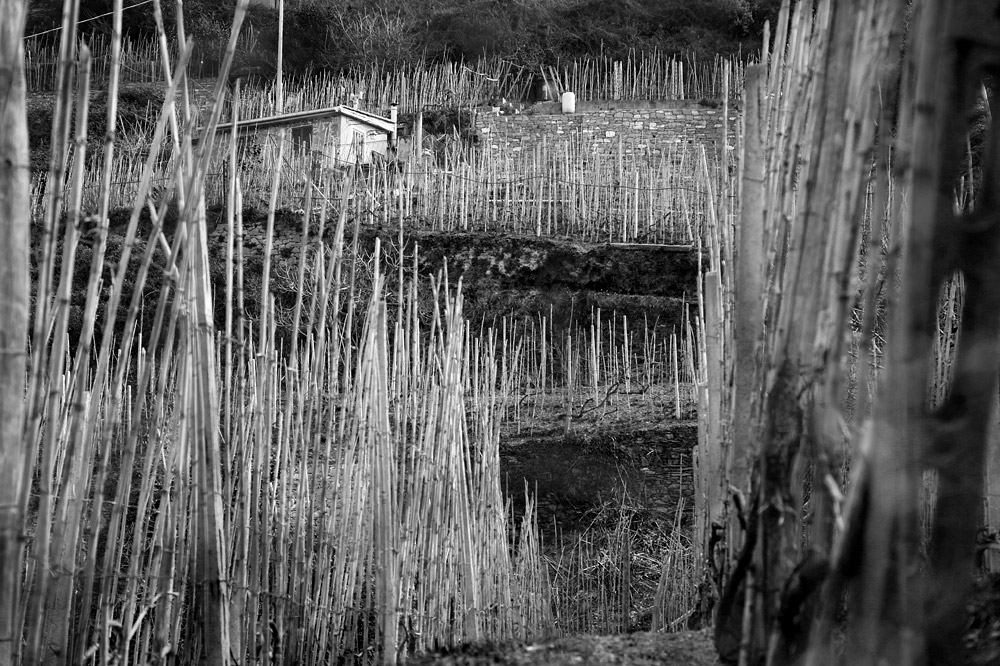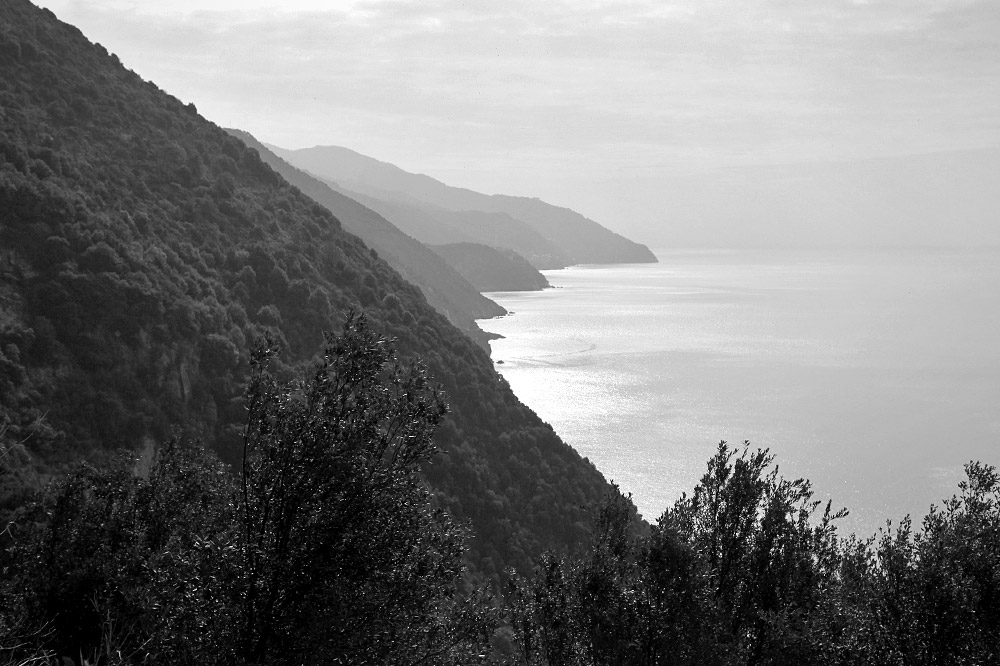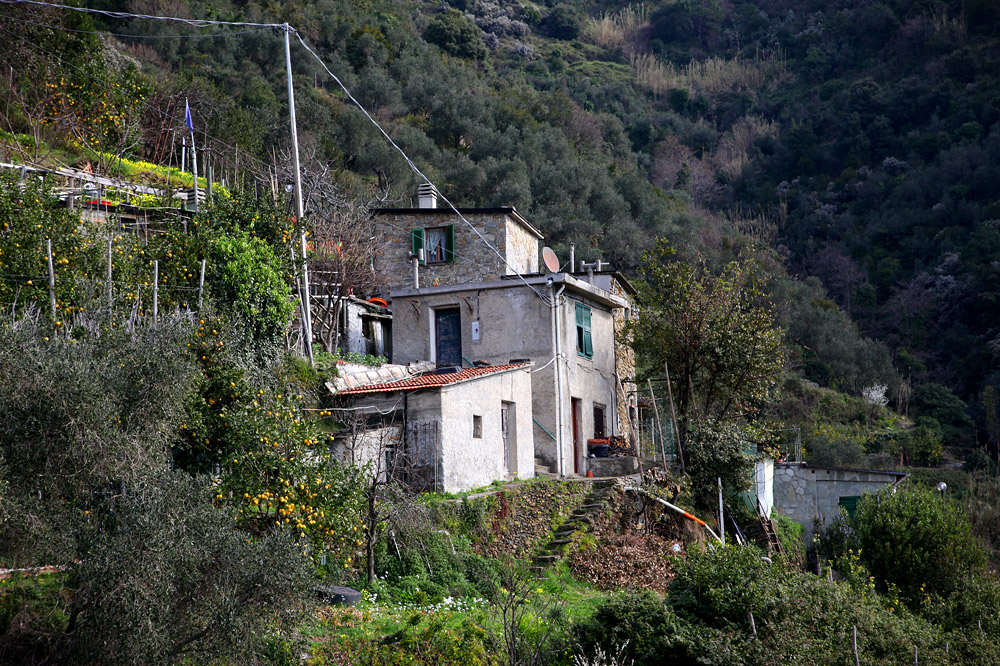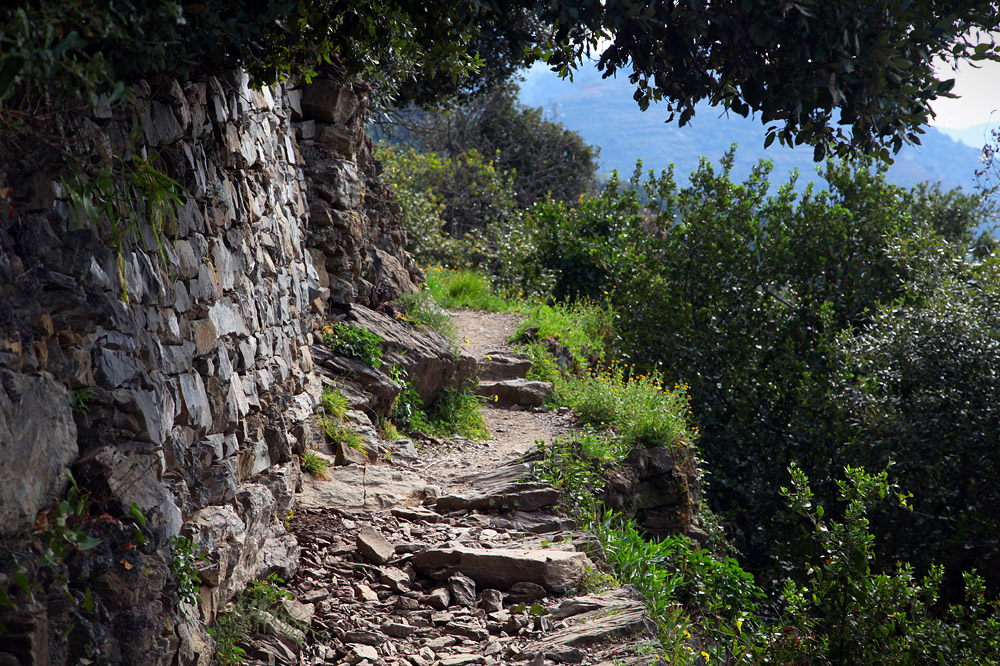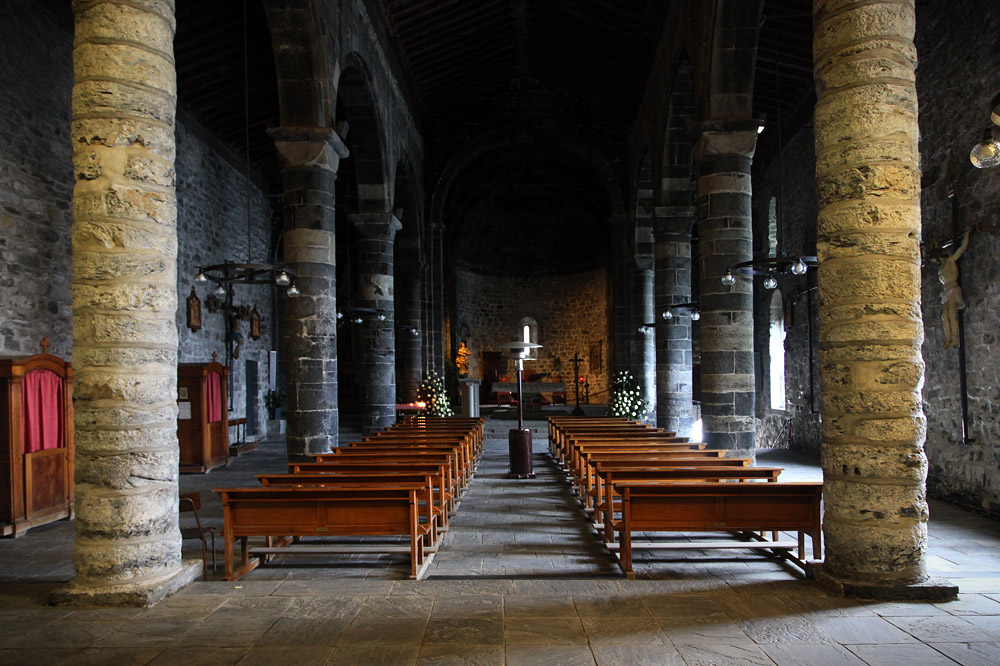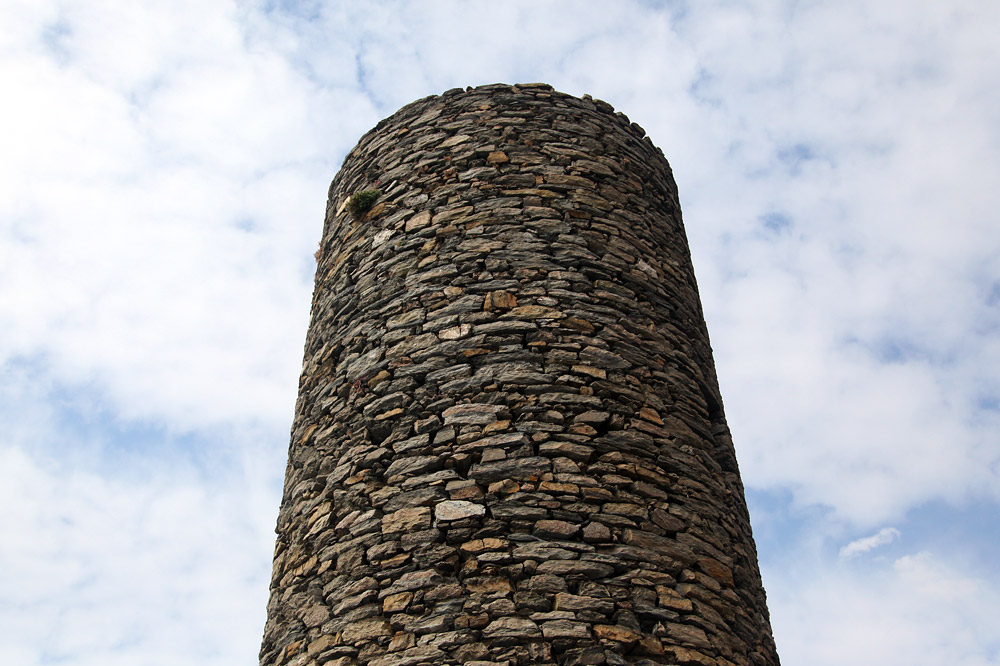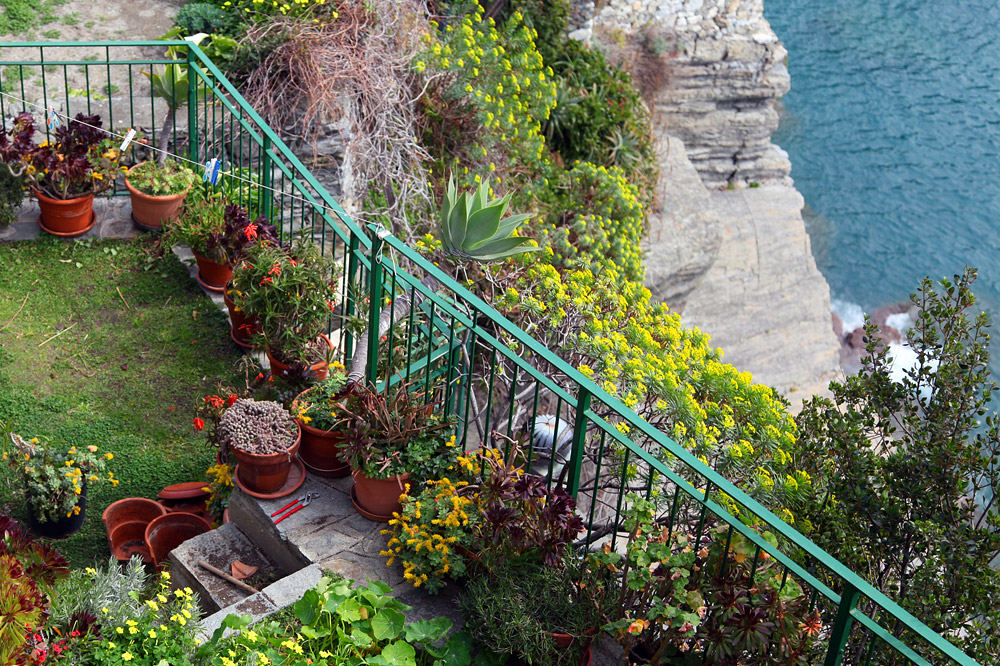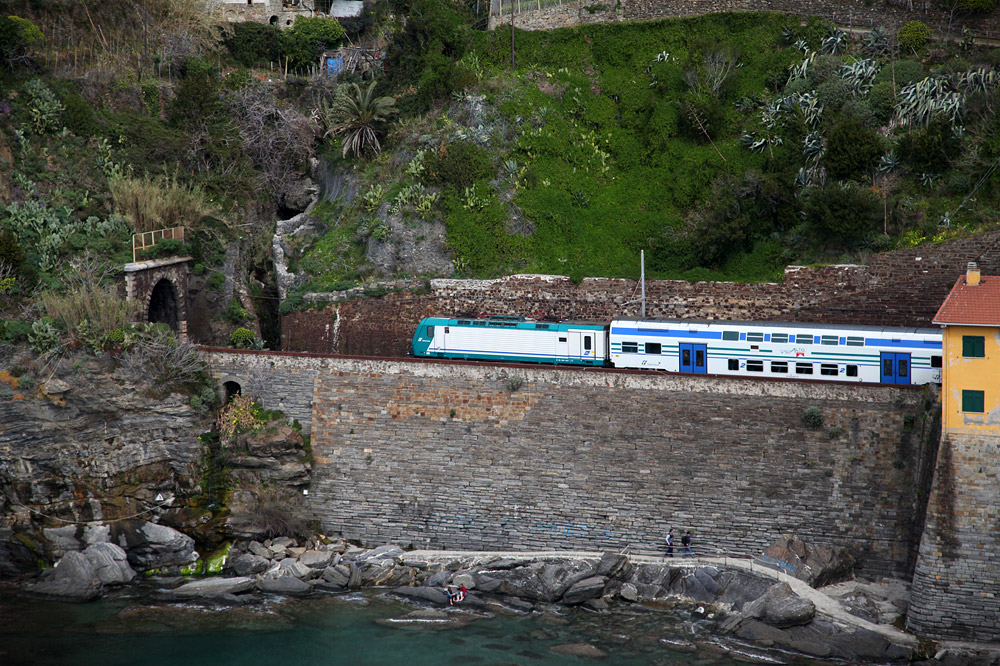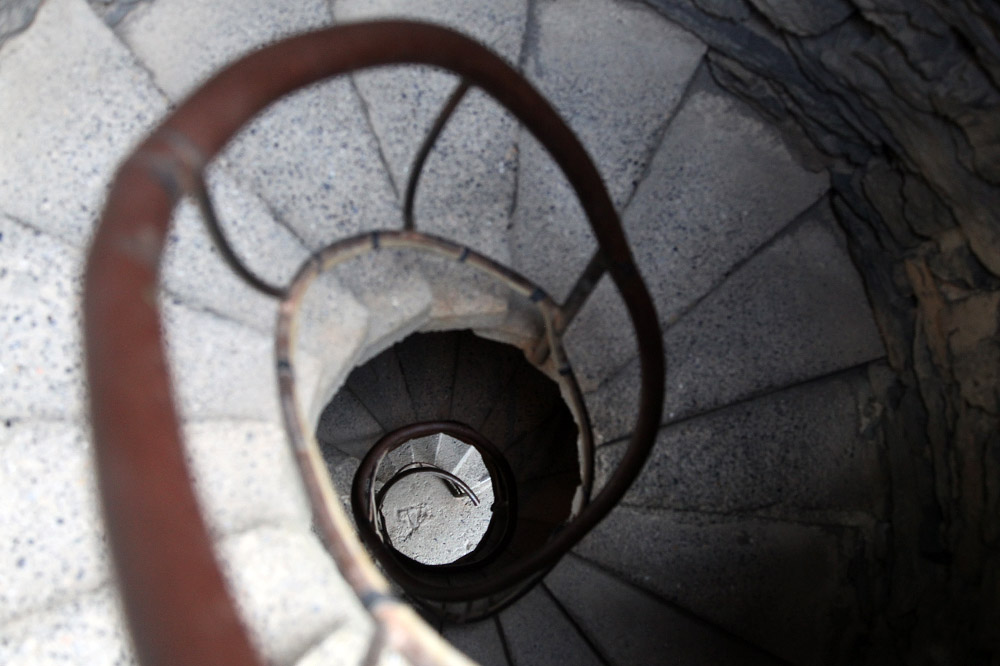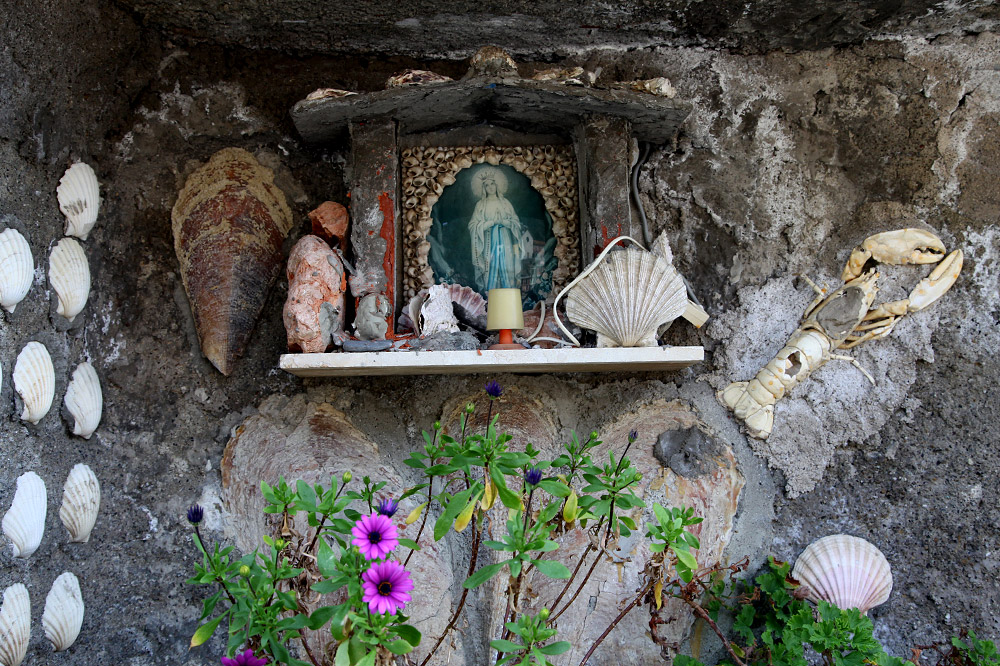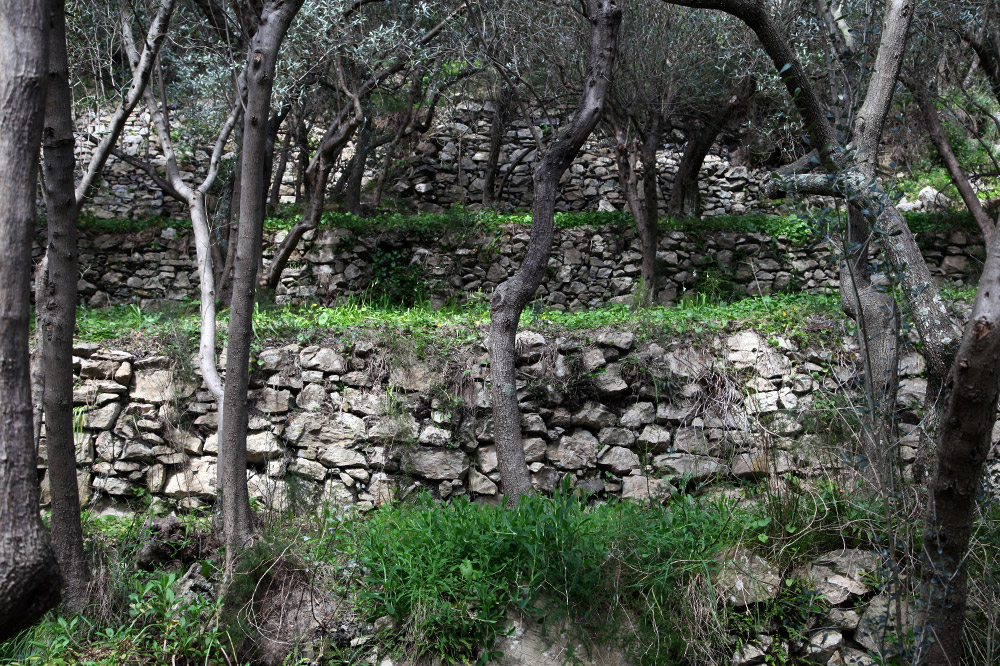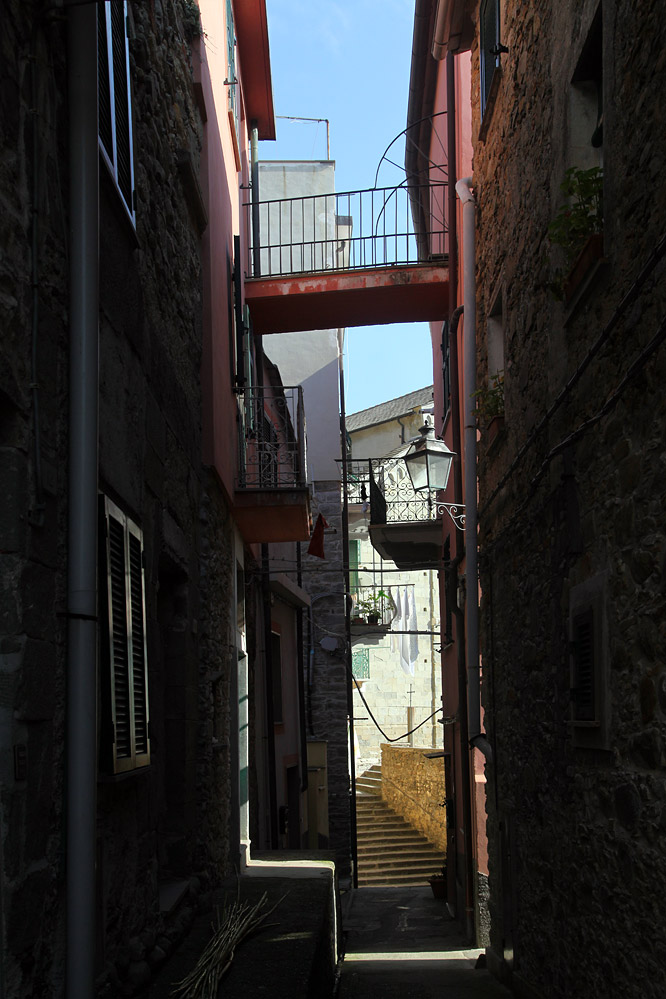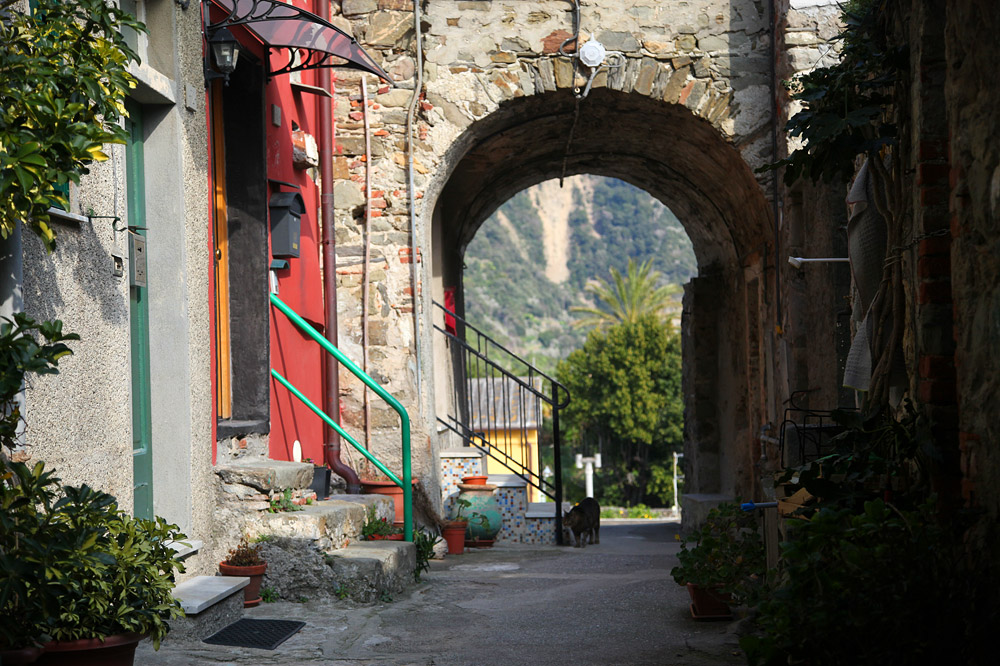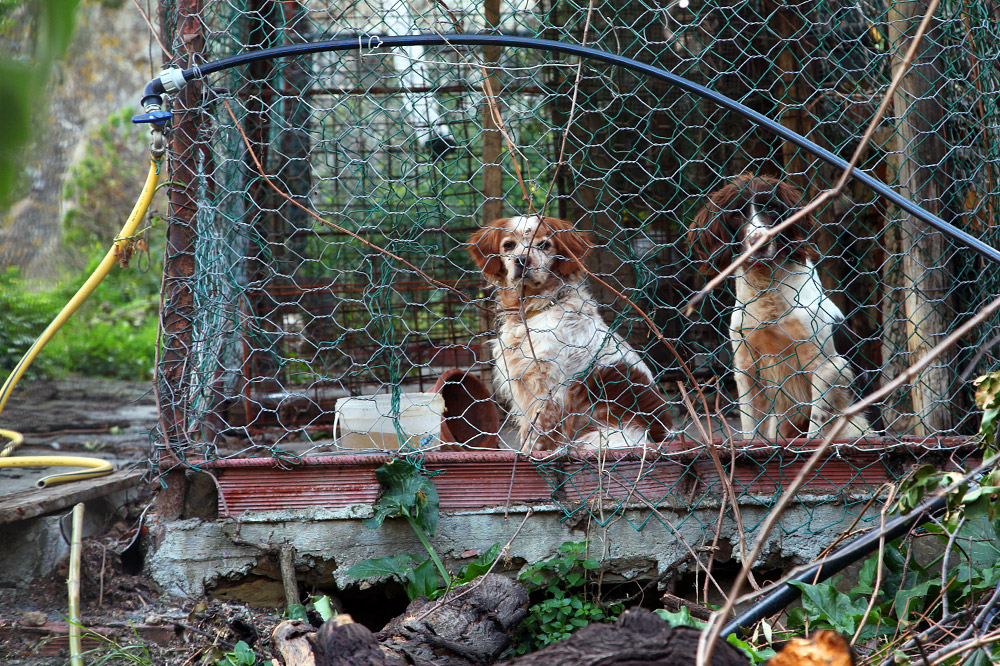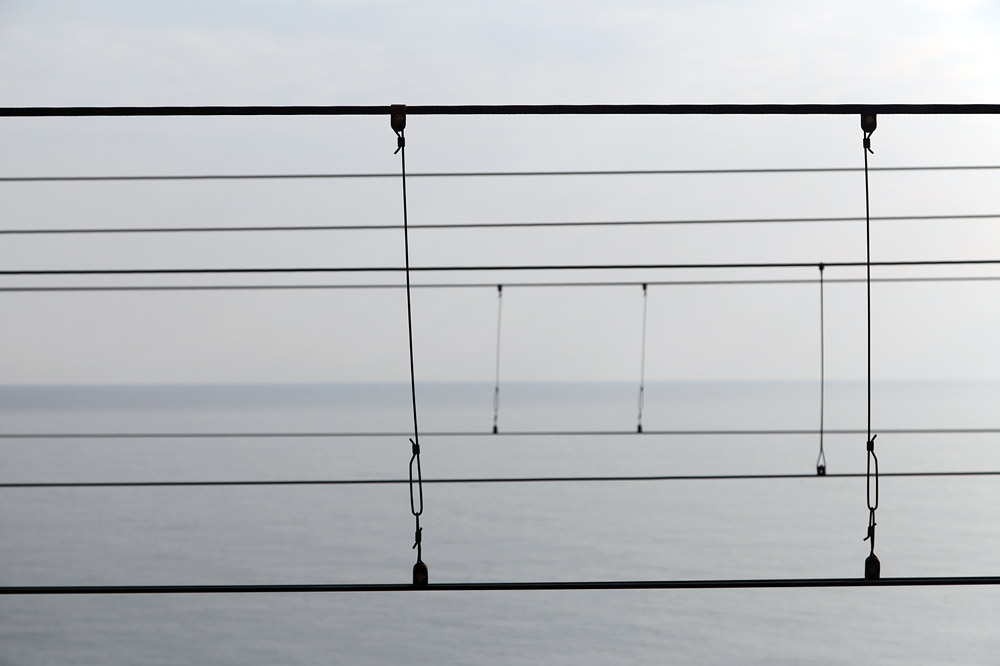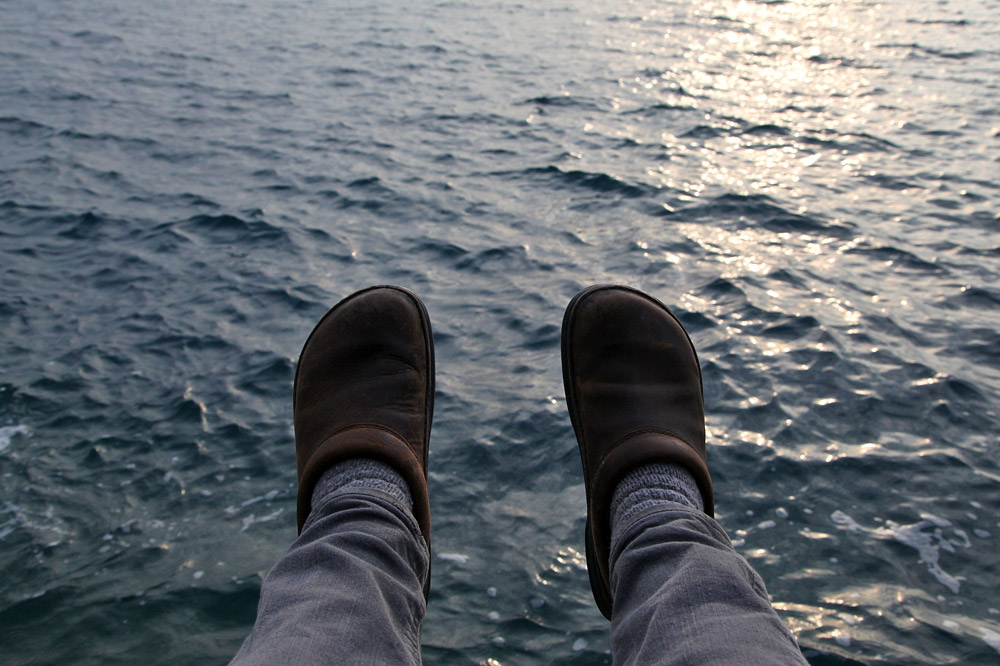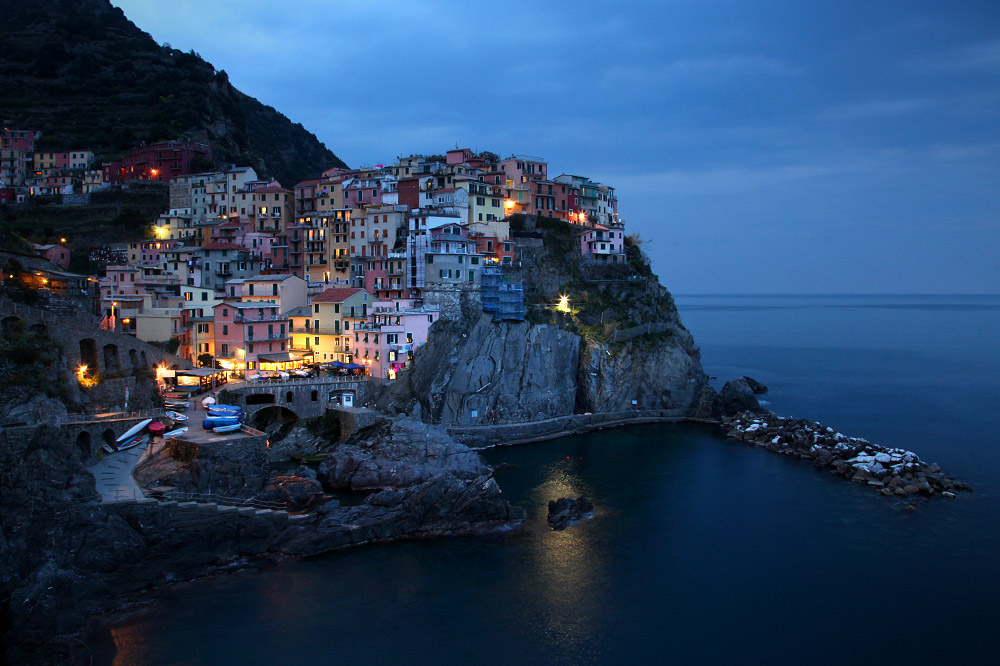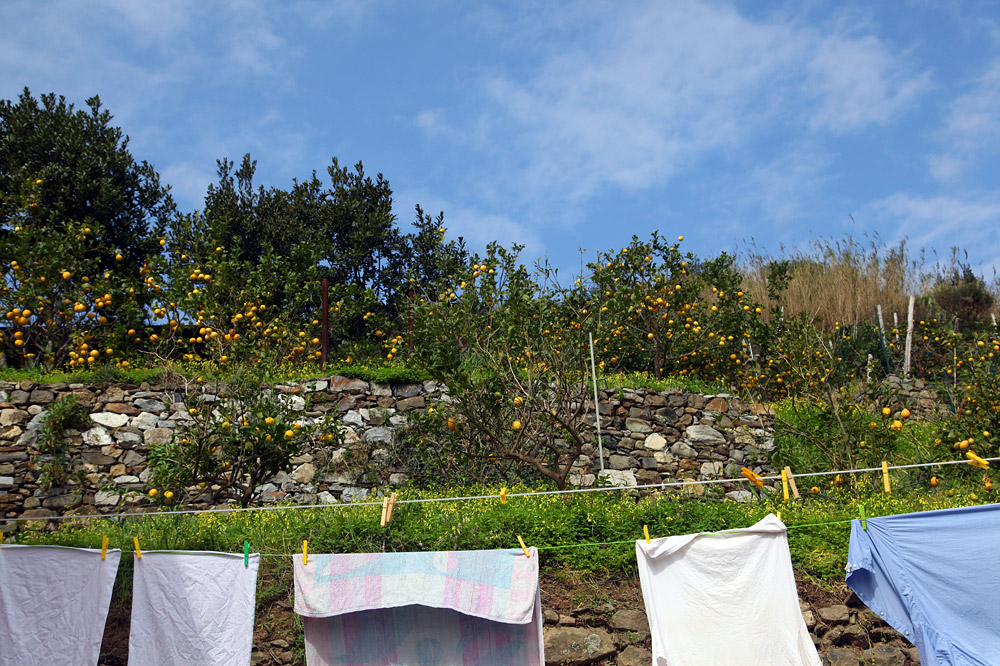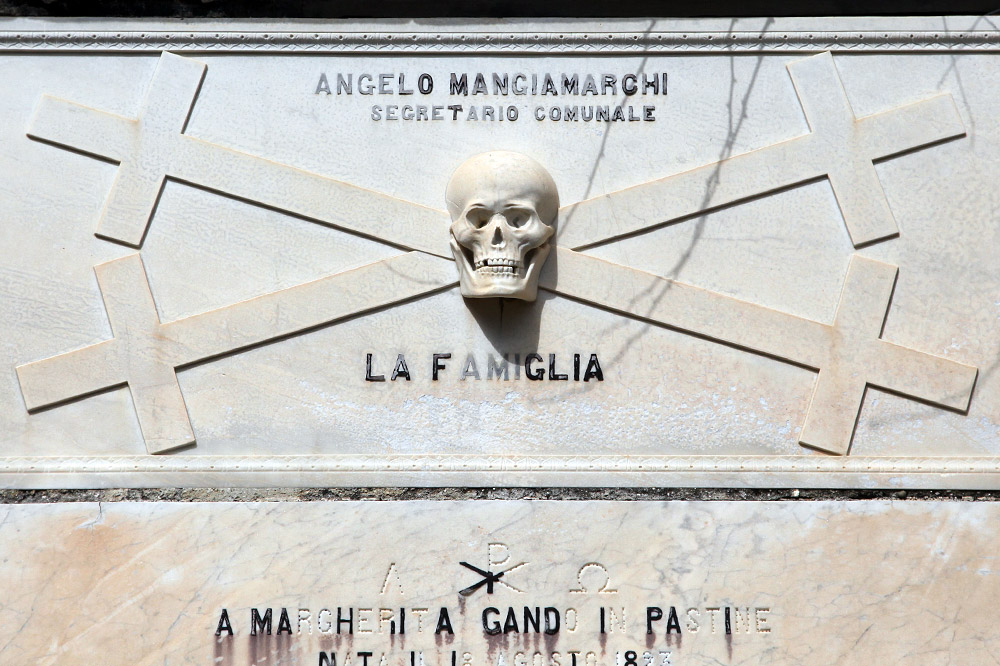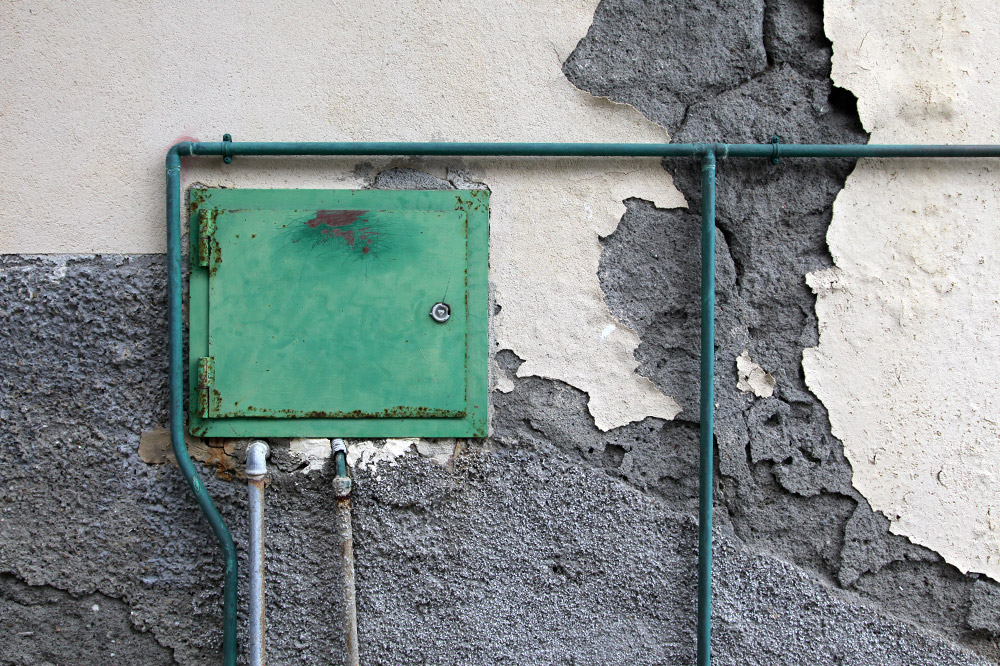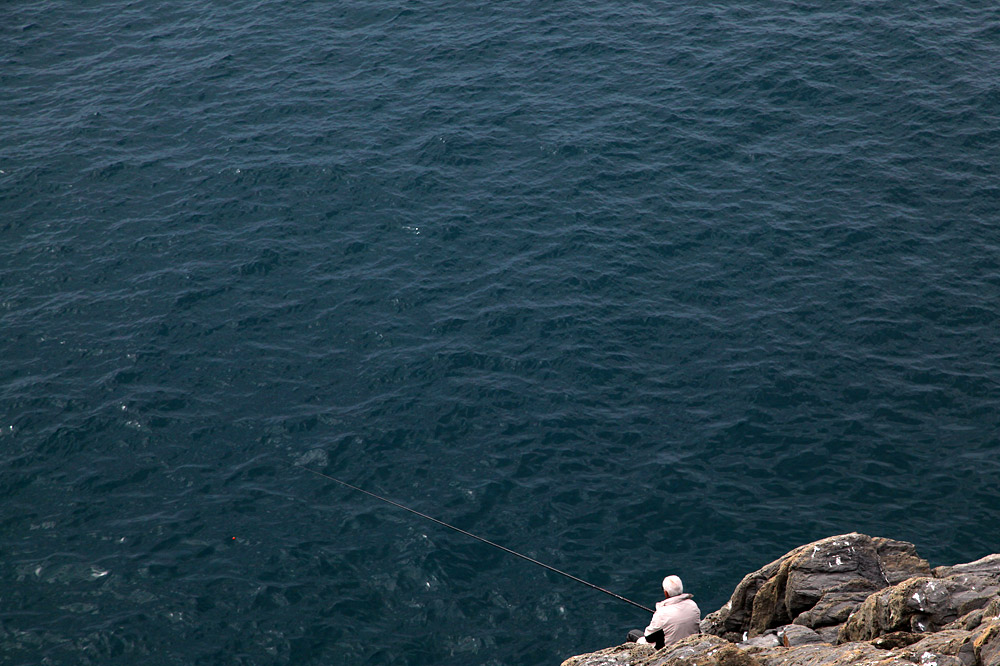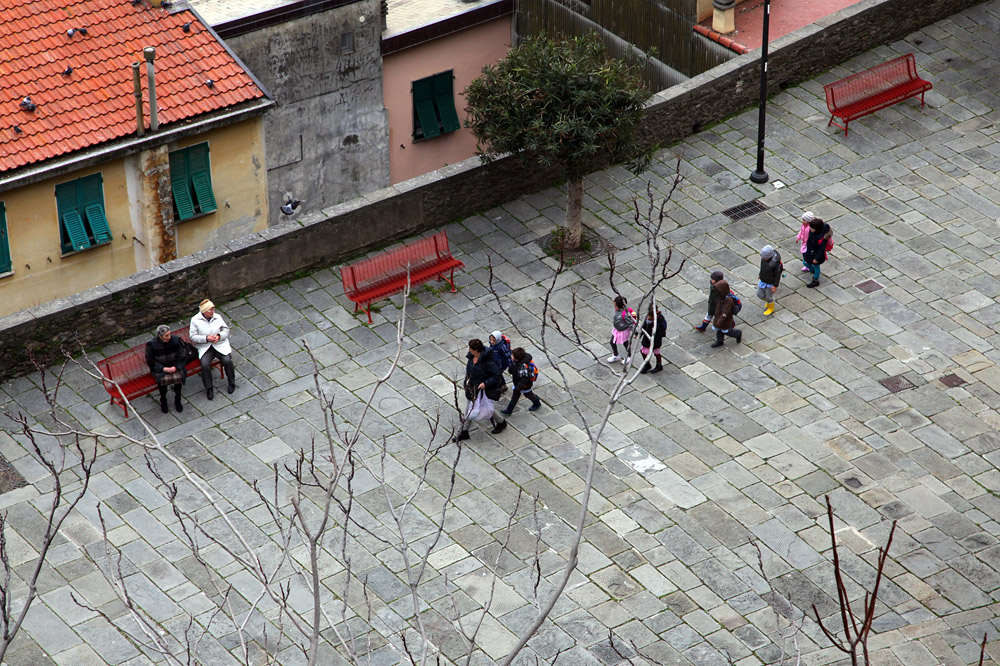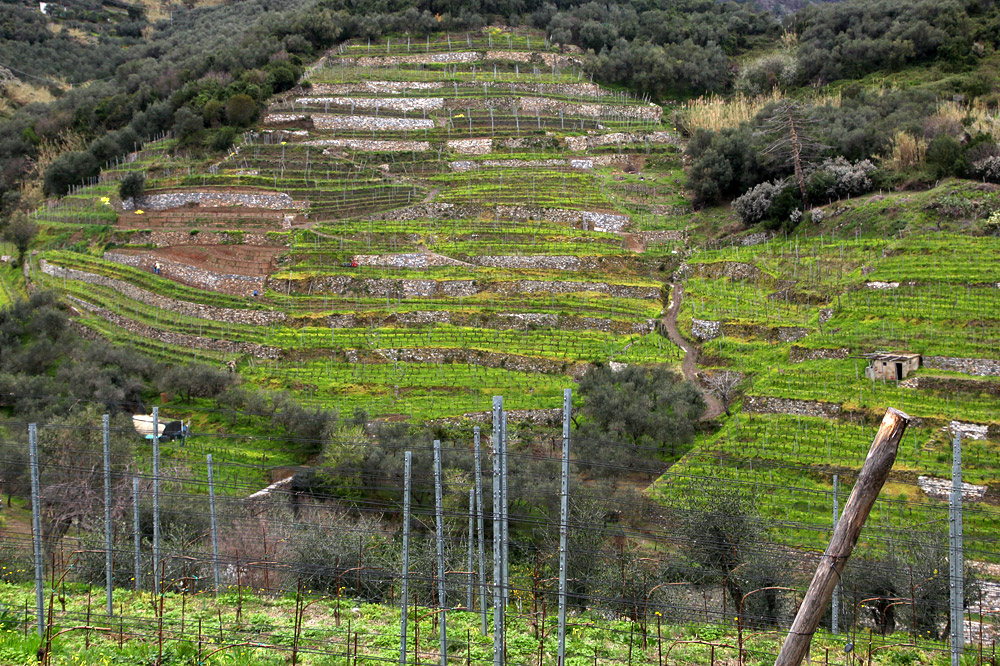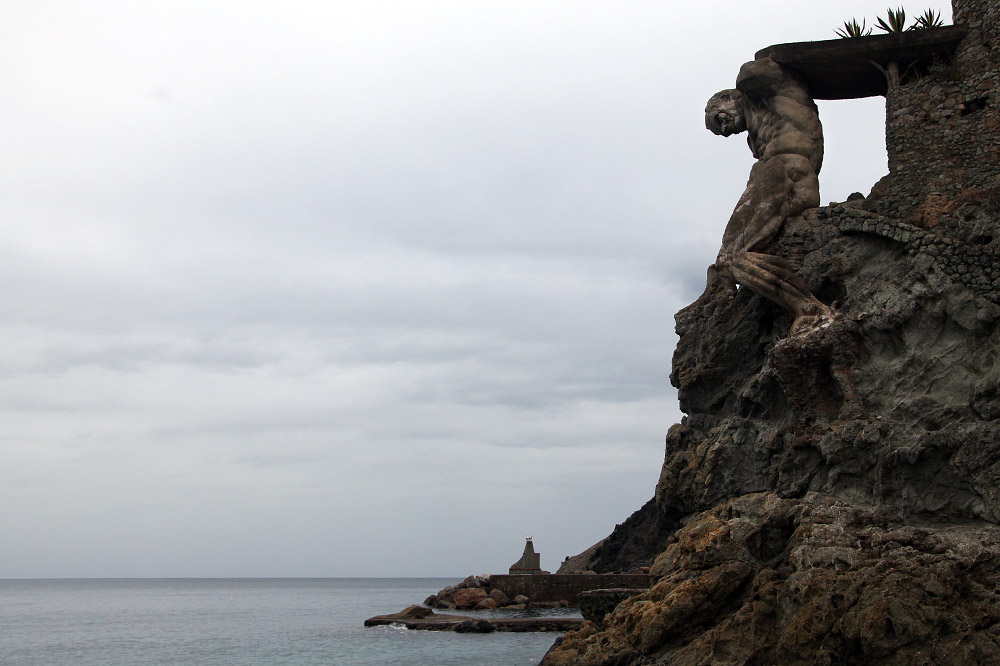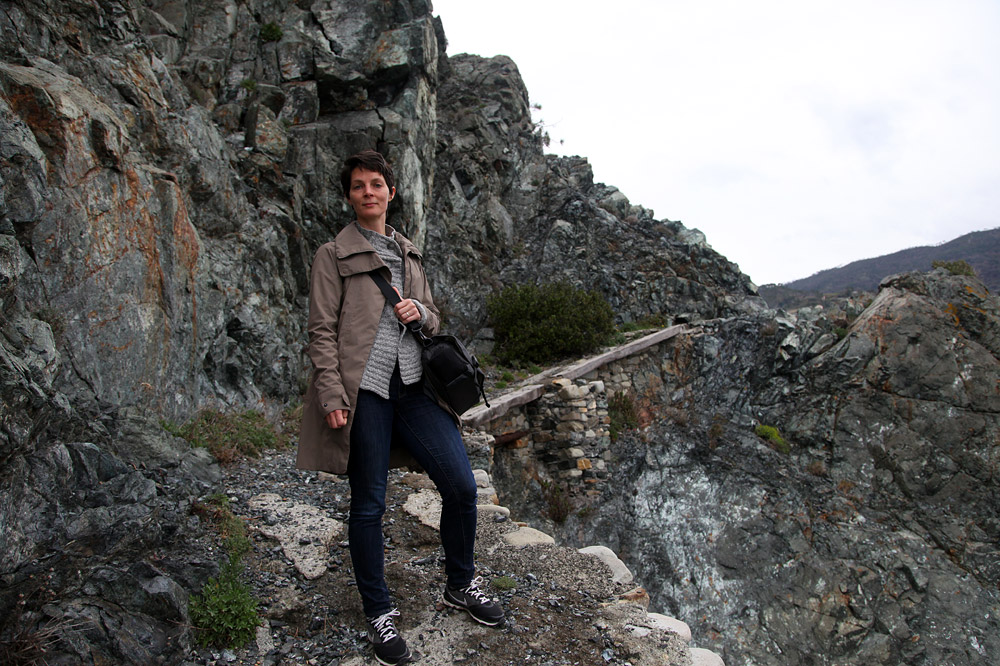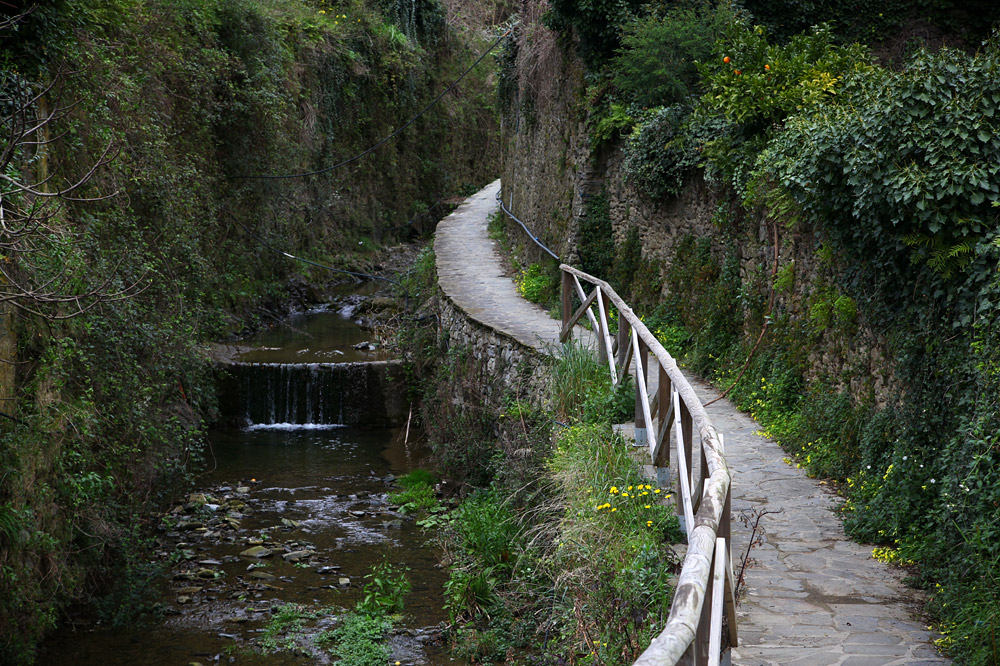Four Amazing Days in Cinque Terre, Italy
Since arriving in Italy, I’ve wished my name was John Buorno and that everyone knew my name.
I would walk through town with a big smile on my face.
“Buongiorno, John Buorno!” townsfolk would yell as they hung out laundry or sliced thin, the meats.
“Ciao tutti!” I would reply. “I’m John Buorno, and you’re not.”
A taste of the beautiful scenery to come from outside the train window.
J and I left Rome on a rainy Sunday morning by train from Termini Station.
We shared a second class cabin with an ever-changing group of four other Italians who mostly slept or talked on their phones.
Outside, a variety of scenery passed: industrial, agricultural, and residential enclaves along the coast. The most interesting view was the massive, mountainside marble quarries in Carrara. The quarries have been active since the Roman Age, and the cuts make the mountains look snow-covered.
After three hours, we disembarked in La Spezia and switched to a slower regional train that would take us under the five towns of Cinque Terre to Monterosso.
According to a tour guide that walked through the cars, there were pickpockets working the train.
The Monterosso station emptied onto the boardwalk. When we arrived, it was sunny and the water was a perfect shade of blue.
We carried our belongings to the old side of town through the car/pedestrian tunnel and wandered up narrow pathways to our hotel.
Stump.
Rocky versus Kid Blue.
Climbing the path to our hotel.
The secret ooze.
Italia.
Manuel’s Guesthouse is run by Manuel and his son. They’re charming and helpful hosts, even more so since we are the only guests at the moment.
Our room has a private balcony with a top-notch view of old Monterosso. At regular intervals, the church bell tolls or a train rumbles into the view between two tunnels and the ocean (€130/night).
J and I hadn’t slept very well the night before, but we dropped our bags and went into town.
Monterosso is considered the least picturesque of the the five towns, but it does have a sandy beach and lots of services. The old town is charming, though everything is still sleepy in the low season.
Like the other towns, a stream runs under what is now the main road. In the past it was just narrow pathways on both sides with small bridges across.
The towns must have been even more picturesque back then.
Our private view of old Monterosso.
The noisemakers.
Shanty with a man that feeds the cats.
Shady colonnade.
Curving steps to an old door.
Firewood stash.
Blue or gold?
Stone steps everywhere.
Don’t airball.
Blue water behind the black rail.
J and I.
Lothario lounging.
Cliff plant.
Laundry day.
Delivering supplies via helicopter.
Our dusk view.
That night, we bought a meal to bring back to the room from a gastronomy at the base of the hill. Dinner consisted of vegetable ravioli, pasta bolognese, roasted vegetables, beer, and wine (€20).
Distance walked for the day: 6.75km/4mi
On Monday, we woke early and ate a full breakfast. Two neighborhood tabby cats wandered up and the one that I named “Pirate Eye” sat in my lap.
We began our hike to Vernazza along the former goat trail that hugged the coastline. The way was beautiful and exhausting, with lots of elevation changes. We passed through small terraced farms growing olives and citrus fruit. The ocean was always to our right, often far below us.
Monterosso church.
Bocce court. The day before, it was packed with talkative older men.
The initial ascent.
Old door.
Vertical excavator.
The path.
A typical view.
Blossoms and lemons.
Early into the hike, we spotted what would be the first of many small farming monorails. The trains were first installed in the 80s. They are costly but save the burden of hauling supplies and harvests up and down the steep terraced farms.
I desperately wanted to ride one of these trains. It looked both terrifying and exhilarating to sit on basically a school chair and zoom up 100% grades towing cargo.
A monorail track.
Vineyards with reed supports installed.
High above the water, looking south.
Farm house nowhere near a road.
Stone bridge.
The shade.
About halfway to Vernazza, we were greeted by five cats on the path. They loitered by a makeshift cat sanctuary that included a small plastic bin full of canned cat food and a sign encouraging hikers to feed the beasts.
While I opened a can and glopped out the gelatinous chow, we had a conversation with a man from Normandy that had just begun a worldwide backpacking trip. One of the cats didn’t like Normans.
A sanctuary cat.
More monorail track going down the hill.
Olive nets.
Slate roof.
Cool flower.
Agave and flowers.
A perfect stone wall.
Me and my dream monorail. Photo by J.
Entryway.
Stream.
After 2.5 hours of hiking, we descended into Vernazza. We admired the church, clear water, and interconnected pathways between the colorful buildings.
We payed €1.50 each to go to the top of the old tower, but the view wasn’t nearly as good as you can get for free on the hillside pathways.
Before continuing the hike to the next town, we ate a quick lunch of pizza and focaccia slices (€6).
The path into Vernazza.
Old paint on a wooden door.
The cove cat that I patted.
Inside the church.
Buoys.
Church exterior from where we ate gelato.
Colorful buildings.
Gas.
Doorways.
The old tower.
Prime garden.
Precipitous settlements.
The regional train.
Looking down from the tower.
Lamp.
An offering.
Ocean shrine.
Leaving Vernazza.
The hike to Corniglia took about as long, and we were getting hot and tired. This town is perched on the hillside and has no connection to the water except for near the train station at the bottom.
We stopped for a drink and a snack before exploring the rest of the town.
One of thousands of lizards we passed.
Rocky road.
Olive terraces.
Corniglia.
Clear signage.
Beetle.
Blossoms.
J resting in the shade.
Looking back before our descent.
Entering town.
Church door locking mechanism.
Pathways.
Arch and cat.
Walkway between farms to a viewpoint.
Caged dogs.
The excessive railing for the stairs down to the train station.
Train power.
Platform texture bonanza.
Scenic and functional.
Due to landslides, the shorter coastal pathways between Corniglia, Manarola, and Riomaggiore were closed.
We took the short train ride to Manarola. I had wanted to see this beautiful town at dusk for nearly a decade, and compared to the rest of the day I had the patience of a saint while we waited for two hours to see the sun set.
It was worth it.
The path to the ocean at Manarola harbor.
These clogs will travel.
Me and my dream town.
Building detail.
Manarola at dusk.
In the darkness, we continued up the hill and enjoyed a small dinner and drinks at a nearly empty bar overlooking the town.
Another cat wandered around our legs looking for food.
Distance walked for the day: 19.5km/12mi
Tuesday, we hiked up the hill to the cemetery contained within the old stone fort. Then we took the train to Riomaggiore.
Lemons and laundry.
More lemons.
Shrine and door.
Mystery door at the bottom of a massive stone wall.
The entrance to the cemetery.
Stone guard.
Tomb hallway.
Flirting with babes from beyond the graves.
The open plots on the top of the fort.
Tombs with a view.
Spooky marker.
Mossy courtyard.
View of new Monterosso from inside an old Nazi bunker.
Methane venting pipes.
The name of the town means “major river”, but only a small amount of water discharged from the opening under the street into the town’s picturesque cove.
J and I wandered all around the hillsides, soaking in the views and watching the birds. It started raining in the afternoon, and we ducked into an empty cafe to stay dry. A helicopter swooped back and forth around the hills for over an hour, dropping off hanging cargo to multiple destinations.
It must be an expensive way to make deliveries, but for a lot of the properties there is no better way.
Due to weather, we took the train home before sunset.
Sea cave.
Long steps to the top.
Homes and terraces.
Love doves.
Pipes and panel.
Old fisherman.
Why the path is closed. It’s a big drop to ocean through that hole.
Fishing infrastructure under the train station.
Dueling doorways.
Two fisherman of Riomaggiore.
Mothballed boats.
Tow old ladies watch a row of children.
The same two fisherman dwarfed by the sea.
A view from the harbor.
That night we brought two different lasagne slices to our room to enjoy with beer, wine, water, tea, and pineapple juice.
We listened to the rain and strong winds rattle the shutters.
Distance walked for the day: 12.5km/8mi
Today, we decided to stay in Monterosso.
At breakfast, the cat I named “Drool” sat on my lap and drooled.
Afterward, we took the high road from old town to new. We had to dodge some cars, as it was barely two lanes wide.
Vineyard slopes.
Dog walker from above.
Gate made from bed frame.
Temporary(?) log wall.
A shack hidden on the hillside.
Parking bumpers.
Atlas of Monterosso.
View of the private “sailing” club.
J on the closed path to the old lighthouse.
The river that runs under town is visible at the main traffic circle.
We ate a sit down lunch of marinated mussels, pesto gnocchi, caprese, and bread at the tiny Trattoria Oscar (€43). Delicious.
It rained for the rest of the afternoon into evening, but we didn’t mind. It was nice to rest before our next transit day.
Distance walked for the day: 7km/5mi
Cinque Terre’s sparkling ocean, hilly scenery, farms, interesting architecture, friendly people and cats, and personal monorails make it my dreamland.
I don’t know if I will ever be back, but I would like to live in a place like this some day. Or a least have my own monorail.
For J’s take on the Cinque Terre, click here to read her post.




